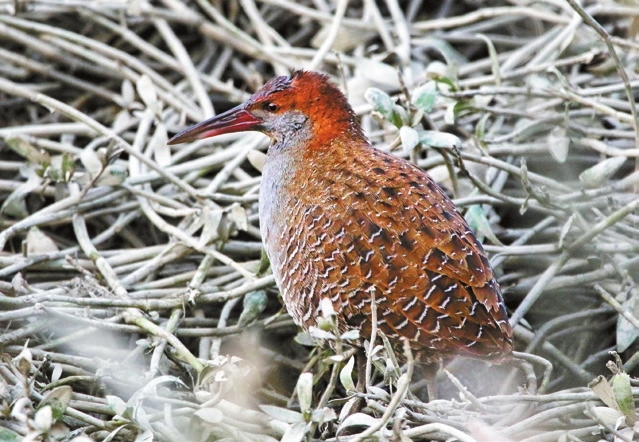
THE slaty-breasted rail (Lewinia striata) is a medium-sized bird species found in Shenzhen’s wetlands. With a slaty-gray breast giving the bird its name, it has a plump body covered in dark feathers, a red beak and a reddish patch over the head. Its long legs enable it to navigate through the dense vegetation of wetland habitats such as marshes, swamps, and mangroves. In Shenzhen, these birds can be spotted along the banks of rivers, ponds and lakes. They prefer areas with abundant cover and suitable nesting sites, making them difficult to spot. Slaty-breasted rails are omnivorous birds with a diverse diet. They feed on insects, small invertebrates, seeds and plant matter. They use their long beaks to probe the ground and vegetation, searching for prey. Their adaptable feeding habits contribute to their survival in different wetland ecosystems. These birds typically breed during the spring and summer months. They construct nests with plant materials, often hidden in the dense vegetation. The female lays a clutch of up to six eggs that both parents take turns incubating for approximately three weeks. The parents then care for the chicks, providing them with food and protection until they are ready to fledge and become independent. The slaty-breasted rail helps to control insect populations, prevent potential pest outbreaks, and maintain the balance of local ecosystems. Additionally, their foraging activities stir up the soil and vegetation, facilitating nutrient cycling and promoting the growth of wetland plants. The wetland plants in turn provide habitats for various organisms, including fish, amphibians, and invertebrates. Their presence indicates the ecosystems’ overall health and biodiversity. Cap: A slaty-breasted rail is foraging in Futian Mangrove Park. | 
